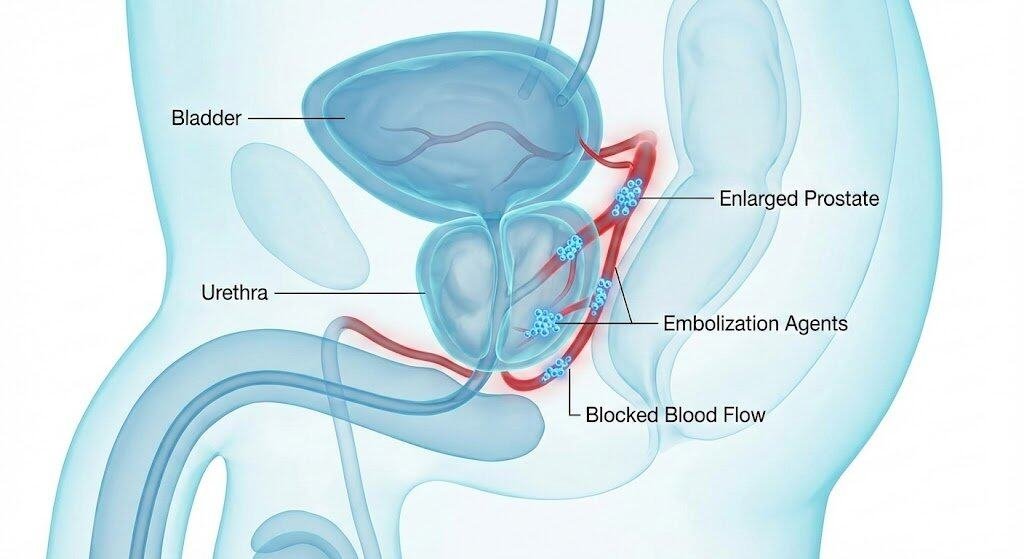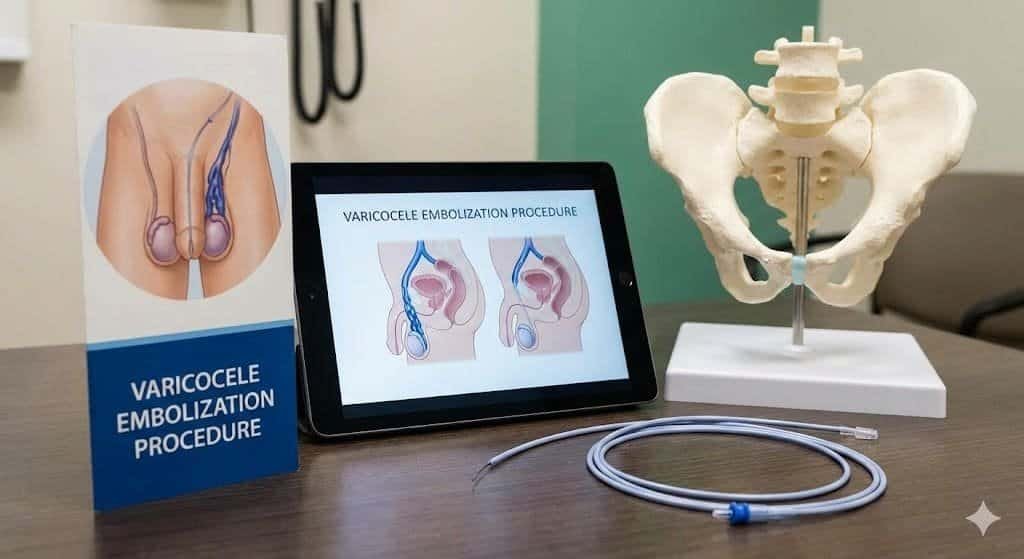What is interventional radiology? It’s a specialized field that combines advanced imaging techniques with minimally invasive procedures to diagnose and treat various conditions. Under the expertise of Dr. Samir Abdel Ghaffar, this approach offers innovative alternatives to traditional surgery, focusing on precise and effective patient care.

What is Interventional Radiology?
Interventional radiology is a specialized subspecialty of radiology that makes use of advanced imaging techniques such as CT scans, MRI, and ultrasound. These high-tech tools, in the hands of highly trained and certified radiologists, enable the performance of a wide range of diagnostic and therapeutic procedures to treat various medical conditions.
Using tiny instruments like catheters and wires, interventional radiologists precisely target areas within the body, offering alternatives to traditional surgery. This approach treats conditions such as vascular diseases, cancer, and uterine fibroids, among others. The procedures are typically performed with real-time imaging guidance, ensuring accuracy and reducing patient recovery time.
Interventional radiology is a rapidly growing field recognized for its innovative application of technology in medicine. It provides patients with effective treatments while minimizing risks, pain, and recovery time, making it a leading choice in modern healthcare.
Advantages of interventional radiology
- Minimally Invasive: Interventional radiology utilizes advanced imaging techniques like CT, MRI, and ultrasound to guide tiny instruments, such as catheters and wires, with precision. This minimizes the need for large surgical incisions.
- Reduced Recovery Time: The minimally invasive nature of these procedures leads to significantly reduced recovery time, allowing patients to return to their normal activities faster.
- Lower Pain and Risk: Patients experience less pain and face fewer risks compared to traditional surgery, as the procedures are less intrusive.
- Wide Range of Applications: Interventional radiology offers therapeutic treatments for a variety of diseases, including cancer, vascular conditions, and uterine fibroids, providing effective alternatives to conventional surgery.
- Cutting-Edge Care: The field is supported by continuous advancements in technology and techniques, ensuring that patients receive the most up-to-date and effective care.
Disadvantages of Interventional Radiology
- Specialized Training Required: The complexity of interventional radiology procedures requires specialized training and expertise, which may not be available in all healthcare settings.
- Limitations for Certain Conditions: Some medical conditions may still necessitate traditional surgery, particularly if interventional techniques are insufficient.
- Potential Complications: Although the risk is lower than with traditional surgery, complications such as infection, bleeding, or vessel damage can still occur.
- Radiation Exposure: Real-time imaging, such as fluoroscopy, is essential for these procedures, but it does expose patients to radiation, although this risk is typically well-managed by trained professionals.
New Interventional Radiology Procedures

- Peripheral Artery Disease Treatment: Recent advancements include innovative angioplasty and stenting techniques to treat peripheral artery disease.
- Minimally Invasive Cancer Treatments: Emerging procedures like chemoembolization and radiofrequency ablation offer less invasive options for cancer treatment.
- Uterine Fibroid and Lymphatic Disorder Treatments: New techniques are being developed to treat uterine fibroids and lymphatic flow disorders, providing patients with more options.
- Precision Tools: The integration of advanced tools, such as precision-guided needles and catheters, expands the range of treatable conditions, offering patients more effective and less invasive options.
Interventional Radiology Examples
Here are some examples of procedures commonly performed in interventional radiology:
- Angioplasty and Stenting: Used to open narrowed arteries and improve blood flow, often in patients with peripheral artery disease.
- Embolization: A procedure to block blood flow to a specific area, such as a tumor or aneurysm, using particles, coils, or other materials.
- Biopsies: Image-guided biopsies allow for the precise collection of tissue samples from organs such as the liver or lungs.
- Uterine Artery Embolization (UAE): A treatment for uterine fibroids that reduces bleeding and other symptoms without surgery.
- Thrombectomy: The removal of blood clots from vessels, often used in treating strokes or deep vein thrombosis.
These responses provide a well-rounded understanding of interventional radiology, its challenges, new developments, career paths, and common procedures.
How to Become an Interventional Radiologist?
Becoming an interventional radiologist requires extensive education and training:
- Undergraduate Degree: Typically in a science-related field.
- Medical university: Completing a Doctor of Medicine (MD) or Osteopathic Medicine (DO) degree.
- Residency in Diagnostic Radiology: A 4-year residency program focusing on diagnostic imaging techniques.
- Fellowship in Interventional Radiology: A 1-2 year specialized fellowship program where physicians receive advanced training in interventional procedures.
- Board Certification: Obtaining certification from a recognized medical board in diagnostic and interventional radiology, such as the American Board of Radiology.
- Continued Education: Ongoing learning to keep up with the latest advancements and maintain certification.
FAQS
What is the Purpose of Interventional Radiology?
Interventional radiology aims to diagnose and treat a wide range of medical conditions using minimally invasive procedures guided by imaging techniques such as CT scans, MRI, and ultrasound. It offers patients less invasive alternatives to traditional surgery, reducing recovery time, pain, and risk.
Is Interventional Radiology a Type of Surgery?
Interventional radiology is not considered traditional surgery but involves performing surgical-like procedures using imaging guidance. These procedures are minimally invasive, requiring only small incisions or no incisions, making them less traumatic to the body than conventional surgery.
What Skills Do Interventional Radiologists Have?
Interventional radiologists doctors possess a unique combination of skills, including:
- Proficiency in Imaging Techniques: Expertise in using advanced imaging technologies like CT, MRI, ultrasound, and fluoroscopy to guide procedures.
- Minimally Invasive Procedure Skills: Ability to perform procedures using tiny instruments such as catheters, needles, and wires with precision.
- Diagnostic Acumen: Strong understanding of diagnostic radiology to accurately interpret images and diagnose conditions.
- Surgical Techniques: Skills in performing minimally invasive procedures that involve placing devices, stenting, and embolization, among others.
- Patient Care: Competence in managing patient care before, during, and after procedures, ensuring safety and effectiveness.
- Problem-Solving Abilities: The capacity to make quick decisions and adapt to challenges during procedures.
What is the Difference Between Radiology and Interventional Radiology?
Radiology diagnoses diseases and conditions through imaging techniques like X-rays, CT scans, MRIs, and ultrasounds. Radiologists interpret these images to provide accurate diagnoses.
Interventional radiology, on the other hand, extends beyond diagnosis. It involves performing minimally invasive procedures using imaging guidance to treat various conditions. While traditional radiologists primarily diagnose, interventional radiologists diagnose and treat, offering therapeutic interventions that often operate as options for more invasive surgeries.
 العربية
العربية 


